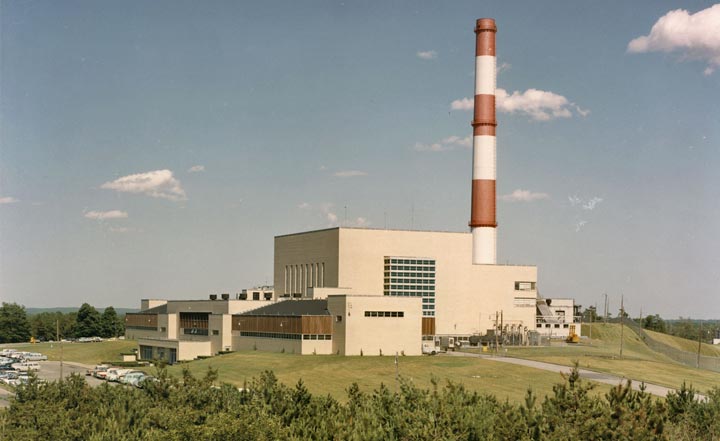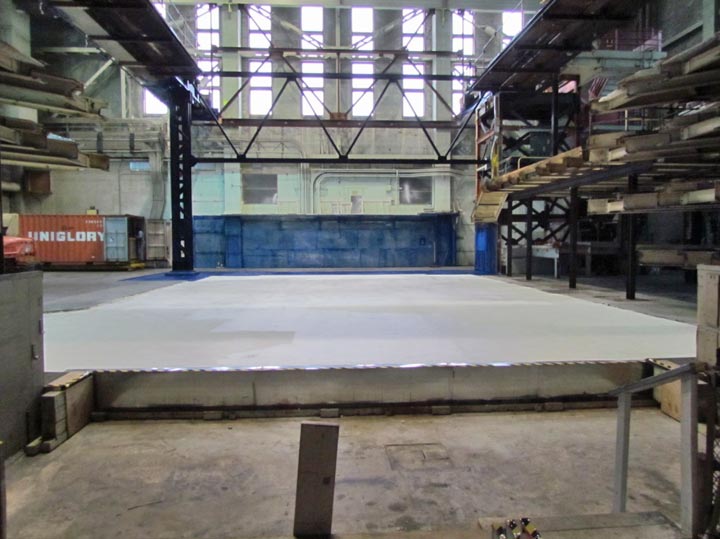Brookhaven Graphite Research Reactor
The U.S. Department of Energy (DOE) has decommissioned the Brookhaven Graphite Research Reactor (BGRR) at Brookhaven National Laboratory (BNL), a small research reactor that was permanently shut down after operating at BNL from 1950 through 1968.
One of 10 national laboratories overseen and primarily funded by the Office of Science of the DOE, BNL is located in the Town of Brookhaven in Suffolk County on Long Island, approximately 60 miles east of New York City. The BNL site occupies about 5,300 mostly-wooded acres in Suffolk County. Many of the Lab’s facilities are near the center of the site, in a developed portion that covers about 1,700 acres.

The BGRR was the world’s first reactor built solely to perform scientific research on peaceful uses of the atom. During its years of operation, it was one of the principal research reactors in the U.S. The BGRR was an air-cooled, graphite-moderated reactor. It was enveloped in a biological shield made of high-density concrete containing scrap iron and limonite.
During reactor operations, outside cooling air was drawn through the reactor pile, then through ductwork where it was cooled and filtered, and eventually exhausted through a 100 meter tall exhaust stack. The primary air-cooling system utilized cooling fans that were located in the former Building 704 Fan House separate from the Reactor Building (Building 701). Exhaust ducting constructed of reinforced concrete ran in two separate ducts below the ground from the reactor exhaust plenums to the system filters and coolers. Downstream of the filters, ducting rose above the ground and combined into one large duct, which was located on, and was supported by, Building 704. The individual cooling fans took suction through 48-inch diameter ducts that penetrated the building roof and connected at the duct bottom. There was approximately 225 ft. of above grade ducting that carried the cooling air to the stack. The above grade ducts were removed. The Building 704 Fan House, the below-ground ducts filter, coolers and wetted portions of the primary liner have also been removed.
The BGRR fuel elements were charged and discharged through graphite channel openings on the south pile face. Reactor operations were controlled by the position of 16 control rods that penetrate the reactor horizontally in directions parallel to the diagonals of the reactor base. The initial fuel of the BGRR was natural uranium (NU) which utilized aluminum fuel elements that were 11 feet long and contained 33 NU fuel slugs each. During the operation with the NU fuel, there were 28 fuel element failures. In 1958, the NU fuel was replaced with enriched uranium (EU) fuel clad with aluminum. Each EU element was 24 inches long.
The reactor was designed for 32 megawatts, with a design-operating limit of 28 megawatts for NU fuel. The reactor normally operated at approximately 20 megawatts with EU.
 Photo
of the BGRR High Bay interior, taken in
April 2012, after the graphite pile and biological shield were
removed and just before the complex was placed in long-term storage.
Photo
of the BGRR High Bay interior, taken in
April 2012, after the graphite pile and biological shield were
removed and just before the complex was placed in long-term storage.
After being placed in standby mode in 1968, the BGRR was permanently shut down in 1969. In 1972, defueling and shipment of the fuel to the DOE Savannah River Site was completed. From 1977 until 1997, portions of the facility were used as the BNL Science Museum. Beginning in 1999 and ending in 2012, the BGRR complex was decommissioned. The graphite pile and the biological shield were removed, and support structures were either demolished or modified for long-term storage.
Long Term Surveillance and Maintenance
Long term surveillance and maintenance activities associated with the BGRR complex are the responsibility of the Groundwater Protection Group (GPG). They are also responsible for the long term operations and maintenance of the groundwater remediation systems, the remediated portions of the Peconic River, and the implementation of controls for the remediated areas.


